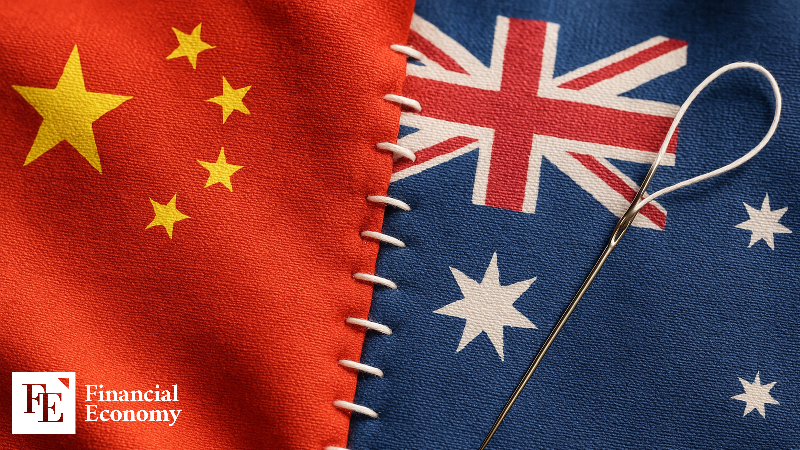After Years of Retaliation, China and Australia Move Toward Normalization
Input
Modified
China to Resume Australian Canola Imports After Five-Year Halt Trade Tensions Eased Since COVID-Era Disputes Ties Improve Following Australia’s 2022 Leadership Change

China is set to resume imports of Australian canola after a five-year hiatus. With trade tensions escalating with Canada—its primary supplier—Beijing has turned to Australia, a country it has long clashed with over trade, signaling a willingness to mend ties. Analysts say China is likely to continue extending such “olive branches” to Australia and other partners as it seeks to offset the strain of U.S.-led tariff battles.
China Turns to Australia Over Canada
On August 19 (local time), Reuters reported that China’s state-owned trading company COFCO had purchased around 50,000 tons of Australian canola, marking the first such deal in years. China had suspended Australian canola imports in 2020, citing concerns about fungal crop diseases, but has now resumed trade. According to sources, COFCO secured shipments for November–December and is negotiating additional purchases, paying under $600 per ton including freight.
The move came just days after Beijing imposed a 75.8% provisional tariff on Canadian canola. As the world’s largest canola importer, China has relied heavily on Canadian supplies in recent years. With trade barriers now firmly raised against Canada, Beijing urgently needs alternative suppliers. One market source noted, “It’s significant that China reached out to Australia despite years of trade disputes. This suggests not just a supply chain adjustment but a strategic choice to improve relations.”
China–Australia ties had steadily soured since the mid-2010s. While Beijing poured billions into infrastructure under its Belt and Road Initiative and expanded influence across Australian politics, academia, and business, Canberra grew increasingly wary. After the U.S. banned Huawei equipment from public institutions in August 2018, Australia followed suit the same month, blocking 5G gear from telecom firms potentially tied to foreign governments—a direct check on China’s influence.
China–Australia Trade War
Tensions between Beijing and Canberra escalated sharply in March 2020, when Australia joined the U.S.-led call for an investigation into the origins of COVID-19. In April, then-Prime Minister Scott Morrison went further, urging an international probe into the outbreak and transmission mechanisms of the virus in Wuhan. China responded with sweeping economic retaliation tantamount to a full-blown trade war. Beginning in May 2020 with the suspension of export licenses for four Australian meat processors, Beijing rolled out restrictions or outright bans on a wide range of Australian goods—including barley, wine, cotton, timber, coal, lobster, and copper—all of which had over 20% export exposure to China.
Among the harshest measures was a blanket ban on Australian coal imports announced in October 2020. Prior to the ban, Australia exported about 42 million tons of coal to China annually—roughly half of China’s imported thermal coal. While this was modest compared with China’s 3.8 billion tons of domestic output and 230 million tons of total imports in 2019, it represented 22% of Australia’s total coal exports, a huge blow in Canberra’s eyes. Markets widely expected the Australian coal sector to suffer severe damage.
But events unfolded differently. Australia offset the losses by redirecting coal to South Korea, Japan, and India. After Beijing turned to Russia and Indonesia to fill its coal gap, those countries reduced supply to their existing partners—leaving Korea, Japan, and India to turn to Australian coal instead. Other sectors adopted similar strategies. Barley found new buyers in Saudi Arabia and Southeast Asia; copper was sold to Europe and Japan; cotton to Bangladesh and Vietnam. In the end, China’s economic coercion largely backfired, inflicting little lasting damage on Australia’s export industries.

How Relations Were Repaired
Australia eventually hit back at China’s trade offensive. In June 2021, Canberra imposed tariffs of 10.9% on Chinese wind towers, 17.4% on railway wheels, and 60.2% on stainless steel sinks. Beijing challenged these measures at the WTO, which in 2024 ruled that Australia’s tariffs were inconsistent and flawed. Australian Trade Minister Don Farrell responded by accepting the WTO’s findings and pledged to work with China to implement the panel’s recommendations.
Australia’s conciliatory stance reflected a political shift at home. In May 2022, the Labor Party came to power after nine years in opposition. Traditionally, Australia’s Liberal Party emphasizes its alliance with the United States, while the Labor Party places greater weight on ties with Asia. The change in government provided an opening to reset relations with Beijing. After a tentative period in 2022, the two countries initiated normalization in 2023 through trade ministerial talks, foreign minister meetings, and side discussions at multilateral forums. During this process, China gradually lifted its import restrictions on Australian coal, barley, wine, and beef.
Experts believe China will continue working to improve ties with Australia. With U.S.-imposed tariffs weighing heavily on its economy, Beijing has every incentive to strengthen trade foundations with other partners. As one market analyst put it, “The U.S.–China tariff war is little more than a truce built on temporary suspensions. Even now, with additional tariffs on hold, the average U.S. tariff rate on Chinese goods is still 51.1%.” The analyst added, “Facing mounting trade pressure from Washington, China has sought cooperation with countries it previously clashed with—India being one example, and Australia another.”





















